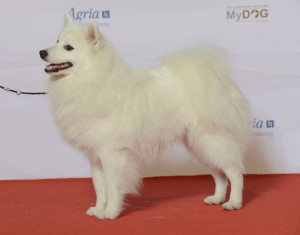Little history of German Spitz in US
The first German Spitz came to the US in the later 1880s with many German immigrants, and were popular if never recognized by the American Kennel Club (“AKC”), being a dog associated with immigrants not Wall Street millionaires. My father told me he had one as a boy in the 1920s. The white dogs were registered by the United Kennel Club (“UKC”) beginning in 1911, and the name changed to the American Eskimo as a result of the US joining in WWI in the fight against Germany. Over the next few decades, additional white German Spitz dogs were brought into the US and registered with the UKC as American Eskimos. There was no registry for the colored dogs in the US except for the very small size, the Pomeranian (AKC in 1888), and the large wolf-grey Keeshond (AKC in 1930).
According to Diane Allen, breeder of Sierra American Eskimos, she imported a white gross spitz into the US in the 1980s but was unable to register the dog with the United Kennel Club (the stud books having closed in 1970), so he spent his life in a kennel.
The Beginning
I began breeding and showing American Eskimos in 1976. When the incidence of health problems rose due to extensive inbreeding of the American Eskimo beginning in about 2010, and there were no longer any options to outcross the large size („standard American Eskimos”), in 2016 I traveled to Europe to see if I could get a white gross spitz female to register as an American Eskimo. This did not turn out since AKC said she had to be registered as a German Spitz, and the American Eskimo association declared that there was no health problem (some of us thought 20% incidence of endocrine disorders such as diabetes was definitely a health problem).
Theia, LINN V MILLUS
Accordingly in 2017, I went to the Netherlands to meet German Spitz breeders. It was there I met my first gross spitz at the home of Anny van den Boomen. She had one girl in the litter and I FINALLY convinced her to sell her to me. She arrived two months later and went to live with my son Edward, who adores her. Watch the own story about Theia, LINN V MILLUS.

Hey Dude Aesir is Amazing
I was convinced these were the dogs I now wanted to share my life with. My next gross spitz was the black female bred by Paivi Silventoinen, who I named Aesir (Hey Dude Aesir is Amazing) born July 13, 2021 in Finland. She was brought to the US by Kristina Chaput who also brought her black gross spitz female Destiny from Germany to the US.
Aesir is a funny dog – incredibly smart and athletic and VERY HIGH energy. Her movement is exceptional and she easily earned her conformation title. She can do all kinds of tricks and difficult actions (walking on rope bridges, climbing ladders) and competed in the 2025 One Canine World Obstacle Course in Alabama this past May – and yes, we both finished, and were #1 in my age category!
In 2025 she was bred using frozen semen imported from Germany. The results were not good and I was very grateful to get one puppy, sired by Otis Filou von der Arnold’s Eiche, a brown gross spitz. This spectacular boy, Thunderpas Extreme Chocolate, is soon going to his new home where he will be shown and loved and be able to contribute to the gross spitz gene pool in the US. He seems to take after his mother with his high energy and enthusiasm.


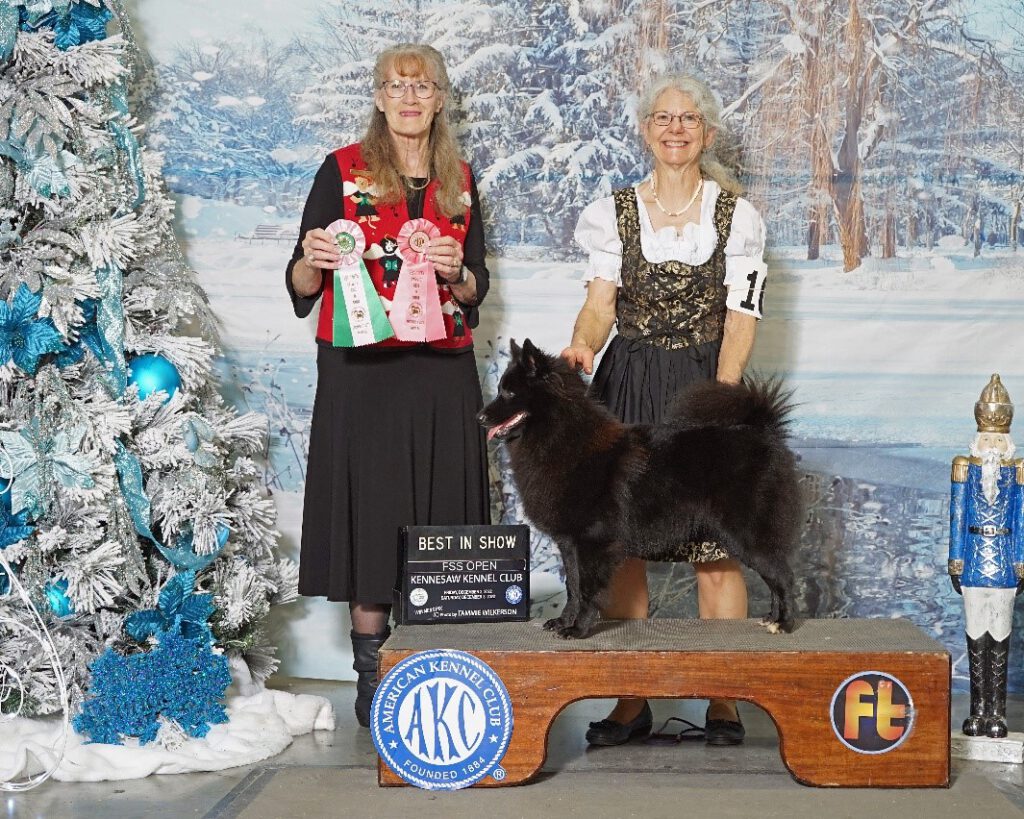
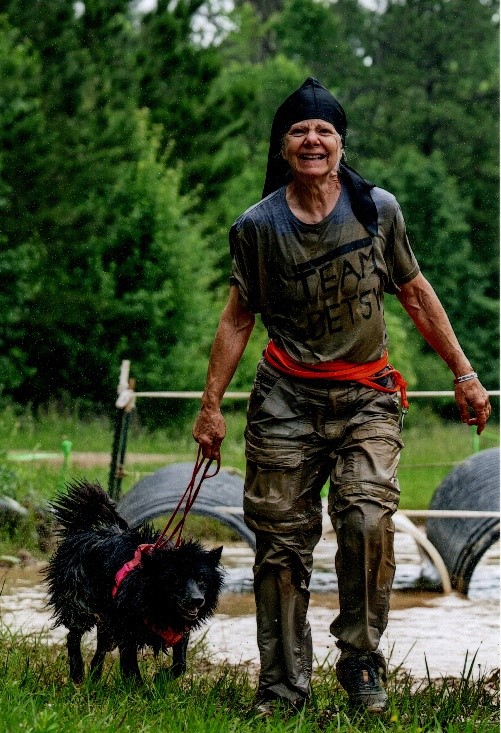
Chili Zimni Sen
I then imported CHILI Zimní sen, born December 21, 2022 in the Czech Republic. Her breeder is Jarmila Krpcova and I hope to have a boy bred by Jarmila coming to the US in early 2026. Chile has the best temperament in the world and swept into the show ring as a star, winning best of breed at the first specialty show of the German Spitz Club of America. Then she and Guus, my second white gross spitz that I got from Anny van den Boomen, decided to have children. The story of these puppies is shared by Valery Fairchild. Chili left to go help a friend in late 2024 who was struggling with her new puppy imported from German, and I have very reluctantly let her keep Chili, although we will try another breeding so I can get a daughter. She adores and spoils Chili and takes her on long hikes, lets her sleep in bed with her, and feeds her much more expensive and fancy foods. However, Chili is very special and I miss her.

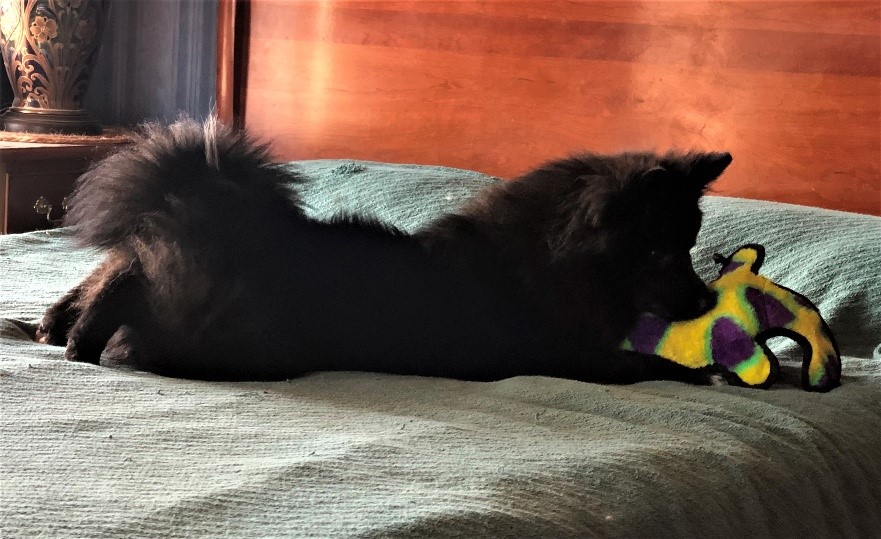


Guus Van Millus
The last German Spitz that I imported is Guus Van Millus, bred by Anny van den Boomen. He was born August 20, 2022. I adore this dog – he has won titles in the conformation ring, Farm Dog, Trick Dog, rally obedience, canine good citizenship, temperament test, and “FastCat” – where they chase a plastic lure over 100 yards – Guus was the fastest German Spitz in the US in 2024 and 2025, and competed at the AKC Fast Cat Invitational event in 2025. Like all of the dogs I have imported, he is genetically clear of all defects, has good hips, elbows, patellas, and eyes.



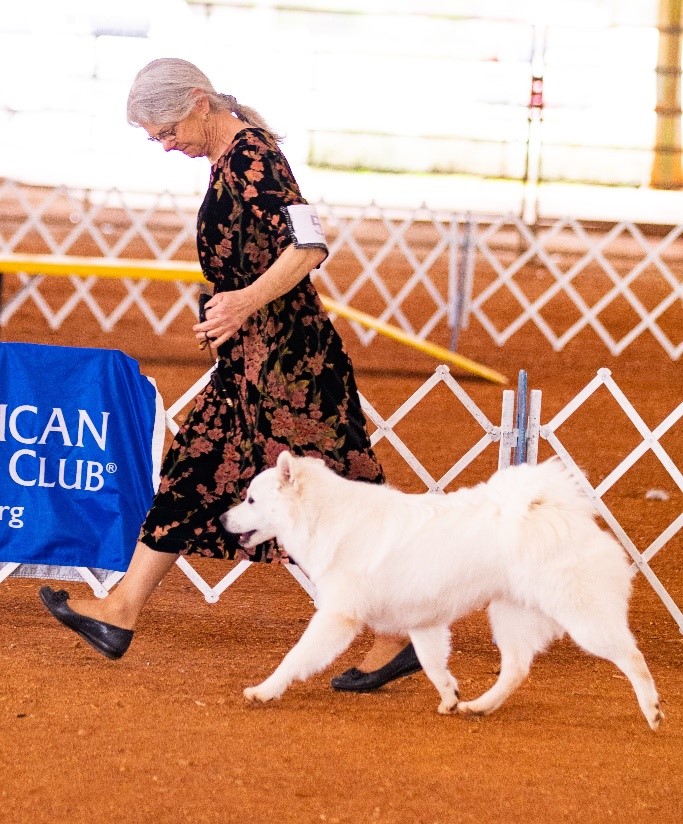
Thunderpas Annika
Theia was bred only once, with semen from Alf vom Oderblick, who needs no introduction, having won in shows throughout Europe, and been in calendars and parades. Annika, Anja and their brother Ahren were born January 4, 2022. Anja stayed with Theia and Edward, Annika stayed with me. She is a sweetheart – beautiful, kind and a fabulous mother, and has earned her conformation title as well as health clearances. She has now had two litters of puppies, and I was fortunate to keep co-ownership of her now champion daughter Bella, who lives with my friend Lydia and her American Eskimo and Japanese Spitz.
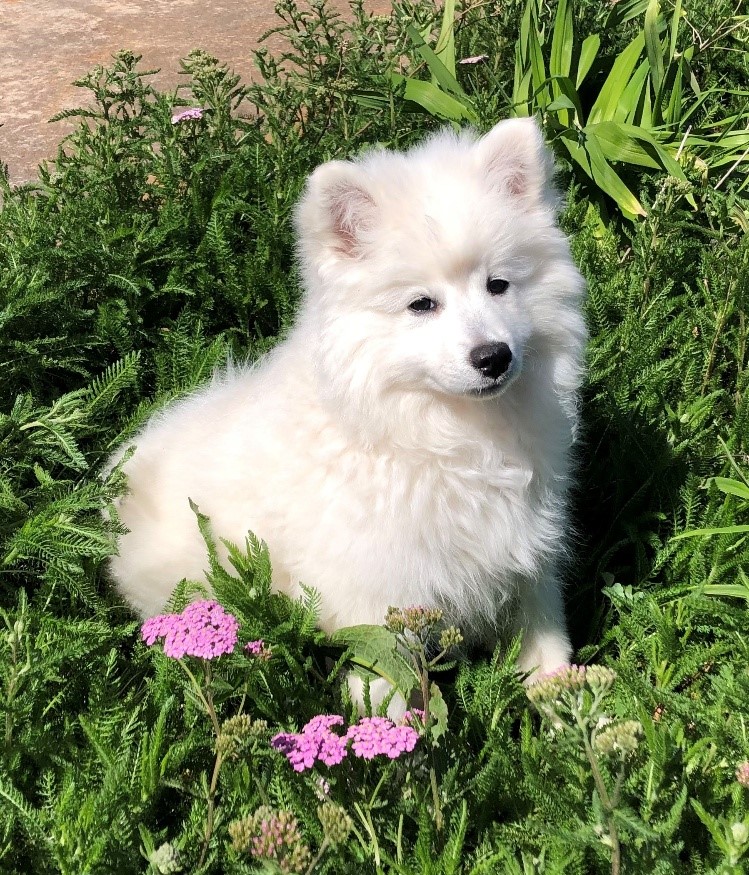


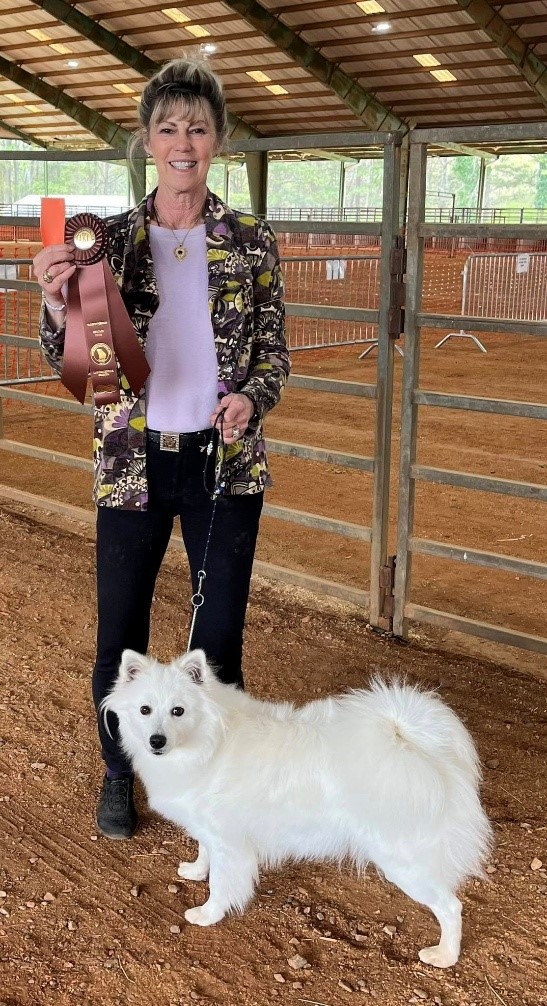
Amera of Destiny Spitz
My last German gross spitz is Amera of Destiny Spitz, bred by me and Kristina Chaput, out of her German import WALDA DESTINY von Kauthen Ruh and imported semen from Benno vom Bayerischen Rigi. Amera has conformation and performance titles and also loves running FastCat, being the #2 fastest German Spitz in the US.
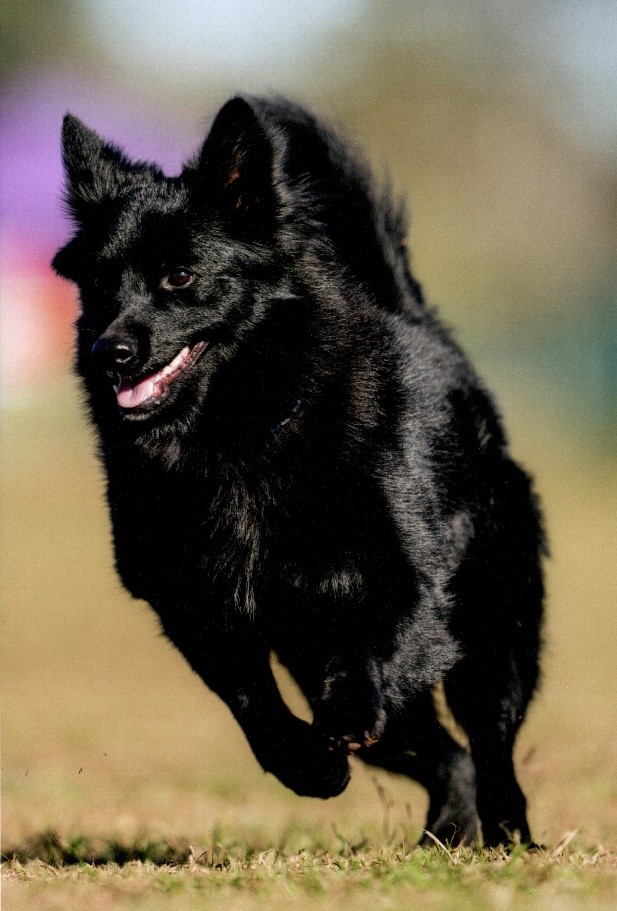
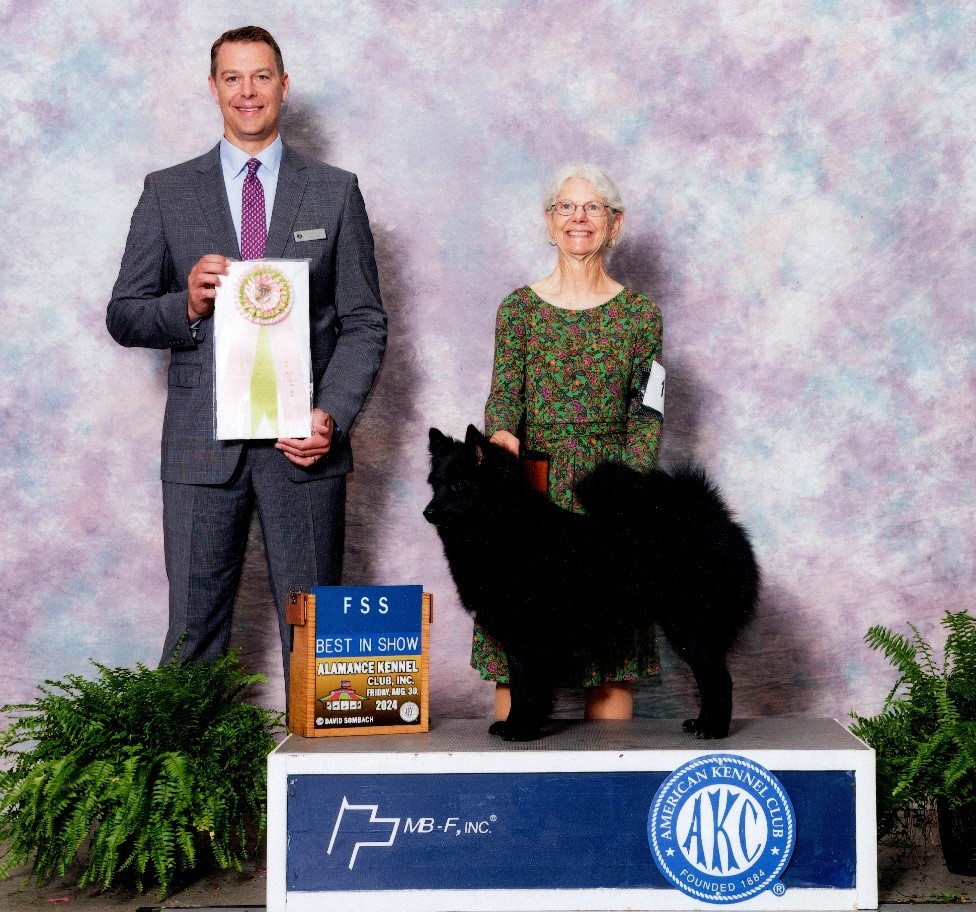
A guest article by Patrea Pabst


